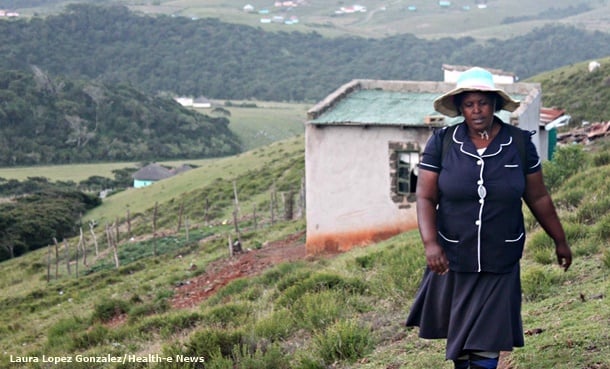From Cape Town to Thohoyandou, more than 3 000 public health facilites span South Africa. In rural areas, the distance between health facilities can span hundreds of kilometres often covered via poor roads. In places like these, the difference between a health care worker having cellphone reception or seeing the familiar “no service” on a cellphone screen can be a matter of life or death.
Read: Patients and staff stranded in KZN over water protests
Linda* is a rural community service doctor. While on call one night earlier this year, she receives word to brace herself for an influx of patients – a bakkie-full of people has overturned while driving home from a church vigil. Linda is fresh out of medical school and before her lies a 65-year-old woman with a dislocated hip in need of an orthopaedic specialist hundreds of kilometers away.
Making work difficult
The ambulances aren’t working, there is no cellphone reception and Linda cannot reach the specialist on the hospital phones.
Hours later, when her cellphone signal returns, Linda reaches the specialist who must talk her through how to set the woman’s dislocated femur over a crackly phone line with the assistance of diagrams he’s sent over WhatsApp.
Read: A new report unearths the shocking state of HPCSA
Standing above the sedated woman, Linda works to thrust the bone back into the socket until she hears the satisfying “clunk” of joint back in place against a backdrop of reassuringly regular beeps from the woman’s oxygen saturation monitor.
Mobile telephones allow many of us working in rural areas to circumvent the challenges posed by the lack of communications and transport infrastructure. Cellphones and in particular smart phones allow us to check for lab results, check the latest guidelines via web-based applications and even receive images that help us diagnose and treat patients.
A matter of life or death
However, many rural health facilities remain virtual “dead zones” of cellphone reception. Many regional emergency services make use of mobile telephone ‘hotlines’, and when an ambulance or hospital is out of network coverage, it can literally be a matter of life or death for patients.
Dr Adam Asghar works at Bethesda District Hospital in northern KwaZulu-Natal. Asghar says that the nearby Itshelejuba Hospital about 100 km away has very patchy EDGE coverage and absolutely no 3G. Health care workers trying to refer patients to higher level care elsewhere or reach emergency services must often walk outside of the building to make calls and wait there for services to call them back. Logging complaints with cell phone providers takes time and often results in call outs only months later.
The Rural Doctors Association of Southern Africa (RuDASA) recently conducted an online survey. In part due to poor network coverage, only 90 doctors nationwide responded.
Poor mobile reception common for doctors
When asked to rate their cellphone voice coverage at work on a scale of one to 10 with 10 being “excellent”, more than half rated service a three or less. When asked to state their most common complaints, 53 percent of doctors complained of calls going straight to voice mail without ringing while about 40 percent also bemoaned poor sound quality and failed calls. One in five doctors surveyed said not even walking outside of buildings improved reception.
Read: Are South Africans more stressed?
About 45 percent of doctors reported being Vodacom customers while about 35 percent were with MTN.
Urban areas have universal high-capacity 4G/LTE cellular coverage, whilst critical rural health facilities lag behind on network technology that is unreliable, and two generations old. Just as a pot hole in Umhlanga will be filled in a matter of days, whilst a pot hole in Ubombo steadily becomes a crater that incapacitates an ambulance, the disparity in cellphone signal between urban and rural areas continues cycles of “infrastructural violence”.
Time to boost coverage
But cellular network providers have the technology to surmount this problem and it begins with the prioritisation of improved rural networks by radio planning executives. Engineers will then be empowered to timeously build base transceiver stations and install antennae to boost coverage.
RuDASA also strongly encourages provincial departments of health and public works to collaborate, and be proactive in finding solutions to long-standing signal issues at healthcare facilities and prevent us from “dropiing the call” on rural patients.
*Name changed upon request
Dr Adam Asghar, Dr Desmond Kegakilwe and Dr Garrick Barber are rural doctors and RuDASA members. This opinion piece was supplied by Health-e News Service.
Also read:
Pray you don't need an ambulance in Mpumalanga
Toxic water scare rocks Cradock as several fall ill
SA kids are poor even before they leave the womb




 Publications
Publications
 Partners
Partners
















